Kate Kemsley (Principal Investigator)
 Kate Kemsley read Physics at Magdalen College, Oxford. After graduating, she worked for some years as a Patent Examiner at the European Patent Offices in The Hague and Berlin, before returning to the UK and to academia.
Kate Kemsley read Physics at Magdalen College, Oxford. After graduating, she worked for some years as a Patent Examiner at the European Patent Offices in The Hague and Berlin, before returning to the UK and to academia.
Her PhD and early career at the Institute of Food Research focused on the design of novel sensors, and quantitative applications of infrared and Raman spectroscopy. Subsequently, she concentrated on multivariate statistics – a family of computational methods particularly useful for handling the large datasets produced by modern analytical techniques. Applications of these methods have included natural product integrity issues, including detecting adulteration of edible oils, processed fruits, meat products, coffee and spices.
The arrival of ‘omics and other high-throughput analytical technologies opened up new opportunities for the data scientist. Kate’s interests expanded to include the application of computational statistics to wide ranging data types and problems, from studies involving the metabolomics platform technologies (NMR, GC-, LC-MS) through electrophoretic, hyperspectral and chemical imaging. She also has a long-standing interest in the processing of electromyograms and other time-domain digital waveforms.
She currently works at Quadram Institute Bioscience, a subsidiary company of the University of East Anglia (UEA) in Norwich. Most recently, her research has focused on methods development using the emerging technology of compact NMR spectroscopy. This work is aligned primarily to industrial application, and she collaborates closely with a range of commercial partners.
Grants won: Kate has been Principal Investigator on grants awarded by many different funding bodies (see below), including BBSRC, UKRC, MAFF, DEFRA-LINK and InnovateUK (TSB). She also works with industry via consultancies.
- Versus Arthritis (2023 – 2025) Using metabolomics (NMR, MS) of biofluids to detect and track rheumatic disease (the ‘Designa’ study). Co-applicant with Norwich Medical School.
- QIBExtra – industrial consultancies (2017 – ongoing) Multiple projects involving pattern recognition, AI and machine learning
- International Atomic Energy Agency/Food Agriculture Organisation (2021 – 2022) – expert consultant, Applications of Benchtop Nuclear Magnetic Resonance Spectroscopy
- FAPAS/DEFRA (2021) Ring trial partner, MRM method for meat authentication
- AHDB/DEFRA (2017 – 2019) Modelling growing media used within UK Horticulture
- EU Framework 7 (2016 – 2018) Consumer and brand protection in complex foods from protein signatures using mass spectrometry
- NRP Translational Fund (2015 – 2016) Development of prototype infrared sensors for predicting dormancy breaking in potato tubers
- EPSRC Standard Grant (2015 – 2018) Collective of transform ensembles for time-series classification
- Walsh Fellowship (2014 – 2018) Non-destructive assessment of quality in fresh produce
- TSB-Spark (2013) Development of FTIR postharvest screening to discriminate between fresh and stored potatoes
- Technology Strategy Board (2012 – 2015) Data processing methods for automated nuclear magnetic resonance (NMR) analysis
- EU Marie Curie Studentship (2009 – 2010) High-throughput analysis of metabolic data in plant systems
- BBSRC (2005 – 2008) Bioinformatics tools and systems development
- DEFRA-LINK (2002 – 2006) Towards improved fermentation consistency using multivariate analysis of process parameters
- UK Research Councils (2004 – 2005) NIR tomography for internal imaging of chemical composition – a feasibility study on plant tissues
- Faraday Fast-track (2003) NIR tomography equipment grant
- Industry confidential (2002 – 2003) Fruit quality measurement
- Natural Resources Institute (2000 – 2001) Gas sensors for authenticating basmati rice
- MAFF (1998) A critical study to develop sampling plans for mycotoxins in cereals and cereal-derived commodities
- MAFF (1995 – 1998) Establishment of guidelines for the application of chemometric methods to food authenticity problems
Mark Philo (Research Scientist)
I have 21 years experience in food science research. I spent 12 years at the Central Science Laboratory analysing organic contaminants in foods from packaging migration such as phthalate esters and acrylamide. I spent another 4 years at Cefas where I monitored the marine environments for organotins and brominated flame retardants. I also developed methods for the analysis of PAH metabolites in crustacean urine and fish bile and the analysis of paralytic shellfish poisoning in shellfish. Since arriving at IFR, I am responsible for the mass spectrometry facilities in the metabolomics group. I am involved in the team metabolomic projects, but also extend the use of the mass spectrometers to the proteomics and phytochemicals departments.
